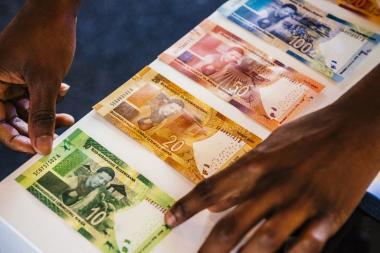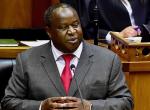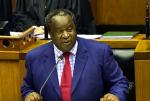SA’s economic to brace for slower growth pace
 National Treasury cuts South Africa's economic growth forecast to 0.7% in 2018 from 1.3% last year.
National Treasury cuts South Africa's economic growth forecast to 0.7% in 2018 from 1.3% last year.
The National Treasury has cut its estimate for South African GDP expansion to 0.7% in 2018 down from 1.3% last year. It sees growth remaining subdued as high unemployment constrains domestic demand.
In the forward to Medium Term Budget Policy Statement (MTBPS) it warns that South Africa finds itself at a crossroads and highlights the difficult economic and fiscal choices confronting government over the next several years.
South Africa’s growth outlook has been revised downwards to 0.7% in 2018, said National Treasury on Wednesday.
“The National Treasury forecasts that GDP growth will slow to 0.7% in 2018, down from 1.3% last year, before rising to 1.7% in 2019 and 2.1% in 2020,” said Treasury as Finance Minister Tito Mboweni tabled his maiden Medium Term Budget Policy Statement (MTBPS) in Parliament.
Treasury said that the country’s economic outlook is weaker than projected in the February 2018 Budget, which forecast 1.5% and 1.8% Gross Domestic Product (GDP) growth in 2018 and 2019, respectively.
ALSO READ: 2018 Mid-Term Budget Key Highlights
“These revisions reflect lower production by agriculture and mining in the first half of the year, as well as a lack of new investment,” said the MTBPS statement while also adding that agriculture and mining are expected to return to moderate growth in the next year.
Meanwhile, business and consumer confidence are expected to improve gradually over the medium term.
On inflation, the MTBPS document stated that higher inflation is expected during the remainder of 2018 in response to administered price increases.
“Headline inflation is projected to average 4.9% in 2018, rising to 5.4% by 2021 as food price inflation returns to its historic average,” it said.
On investment, Treasury said the country has experienced an extended period of weak investment.
“Growth in gross fixed-capital formation, after slowing to 0.1% in the first half of 2018, is expected to measure 0.9% for the year as a whole, and 2.9% by 2021.
“Low levels of demand and prolonged policy uncertainty have contributed to anaemic investment growth,” said Treasury.
In recent months, government has worked actively to improve the investment climate by strengthening governance in state institutions and removing policy bottlenecks in energy and mining.
This comes on the back of President Cyril Ramaphosa’s announcement of South Africa seeking to bring in at least R1.2 trillion worth of investment over a five year period.
Earlier this month, the World Bank cut its estimate for South African GDP growth to 1% this year from 1.4%, it sees growth in 2019 remaining subdued as high unemployment constrains domestic demand.
Overall for the sub-Saharan Africa region the World Bank reduced its forecast for economic growth as the external environment becomes less favorable amid mounting global trade risks and weakening demand for the area’s products.
Gross domestic product in the region will probably expand by 2.7% in 2018, the Washington-based lender said in an emailed copy of its Africa Pulse report. That’s down from the World Bank’s June forecast of 3.1% contained in the Global Economic Prospects publication.

















